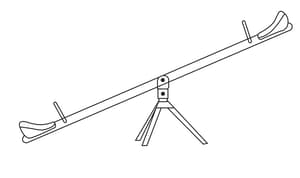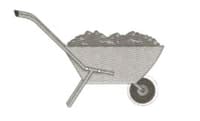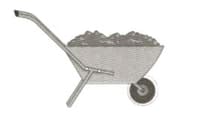David Sang and Darrell Hamilton Solutions for Chapter: Turning Effects, Exercise 1: Exercise 4.1
David Sang Physics Solutions for Exercise - David Sang and Darrell Hamilton Solutions for Chapter: Turning Effects, Exercise 1: Exercise 4.1
Attempt the practice questions on Chapter 4: Turning Effects, Exercise 1: Exercise 4.1 with hints and solutions to strengthen your understanding. Physics for Cambridge IGCSE workbook solutions are prepared by Experienced Embibe Experts.
Questions from David Sang and Darrell Hamilton Solutions for Chapter: Turning Effects, Exercise 1: Exercise 4.1 with Hints & Solutions
Explain how a playground see-saw, like the one in the figure given below, can balance.

A body (object) is in equilibrium. State the resultant force on the body.
A body (object) is in equilibrium. State the resultant turning effect on the body.
The figure shows a wheelbarrow with a heavy load of soil. Add an arrow to show how you could lift the left-hand end of the barrow with the smallest force possible. Remember to indicate clearly the direction of the force.
The figure shows a wheelbarrow with a heavy load of soil.
How do you know that the wheelbarrow is in equilibrium?
In the given diagram shows a beam balanced on a pivot. Add arrows to show the following forces:
A force pressing downwards on the beam that will have the greatest possible clockwise turning effect. Label this force .
A force pressing downwards on the beam that will have an anticlockwise turning effect equal in size to the turning effect of force . Label this force .
In the given diagram shows a beam balanced on a pivot. Add arrows to show the following forces:
A force pressing downwards on the beam that will have the greatest possible clockwise turning effect. Label this force .
A force pressing downwards on the beam that will have an anticlockwise turning effect equal in size to the turning effect of force . Label this force .
What other forces are acting, as well as the force , to keep the beam in equilibrium?
In the given diagram shows a beam balanced on a pivot. Add arrows to show the following forces:
A force pressing downwards on the beam that will have the greatest possible clockwise turning effect. Label this force .
A force pressing downwards on the beam that will have an anticlockwise turning effect equal in size to the turning effect of force . Label this force .

Why can we ignore these in calculating moments about the pivot?




